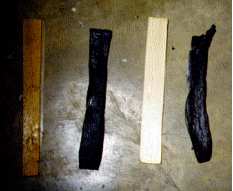
This shows the fuel before and after.

This shows the fuel before and after.
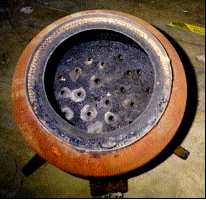
This view is looking down into the empty chamber which is
then packed with the dry wood.
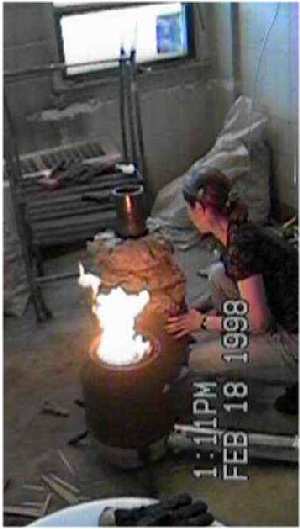
The chamber full of wood is then lit on top.
It could continue like this and work adequately with no wind to disturb
the flame.
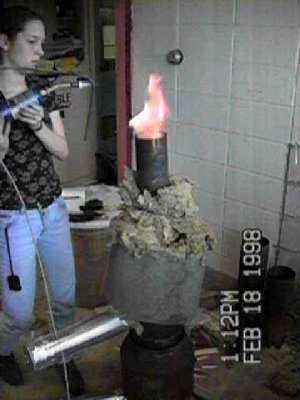
We add a double chimney burner arrangement which attempts to improve
the combustion dynamic. (See diagram)
When it is added the flame is extinguished and needs to be re-ignited
from the top. The drier the wood the sooner we can ignite these gasses.
There is a significant difference during start-up between wood at 6% H2O
Dry basis and wood at 12% H2O Dry basis. Ignition at the fuel surface is
less dependent on low fuel moisture content.
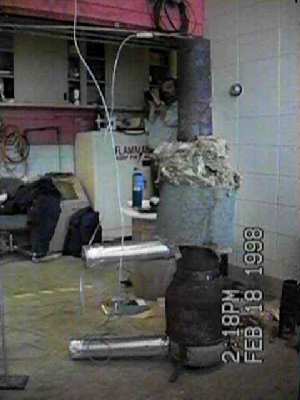
To further improve the combustion we add additional chimney. This draws
more secondary air into the burner and has no effect on the fuel chamber.
The silver tubes are air the primary and secondary air supply ducts which
are used to control and monitor air flow rates.
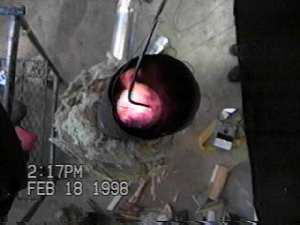
A more vigorous compact swirling flame results.
When it will no longer support a flame, the fuel chamber is sealed and allowed to cool.